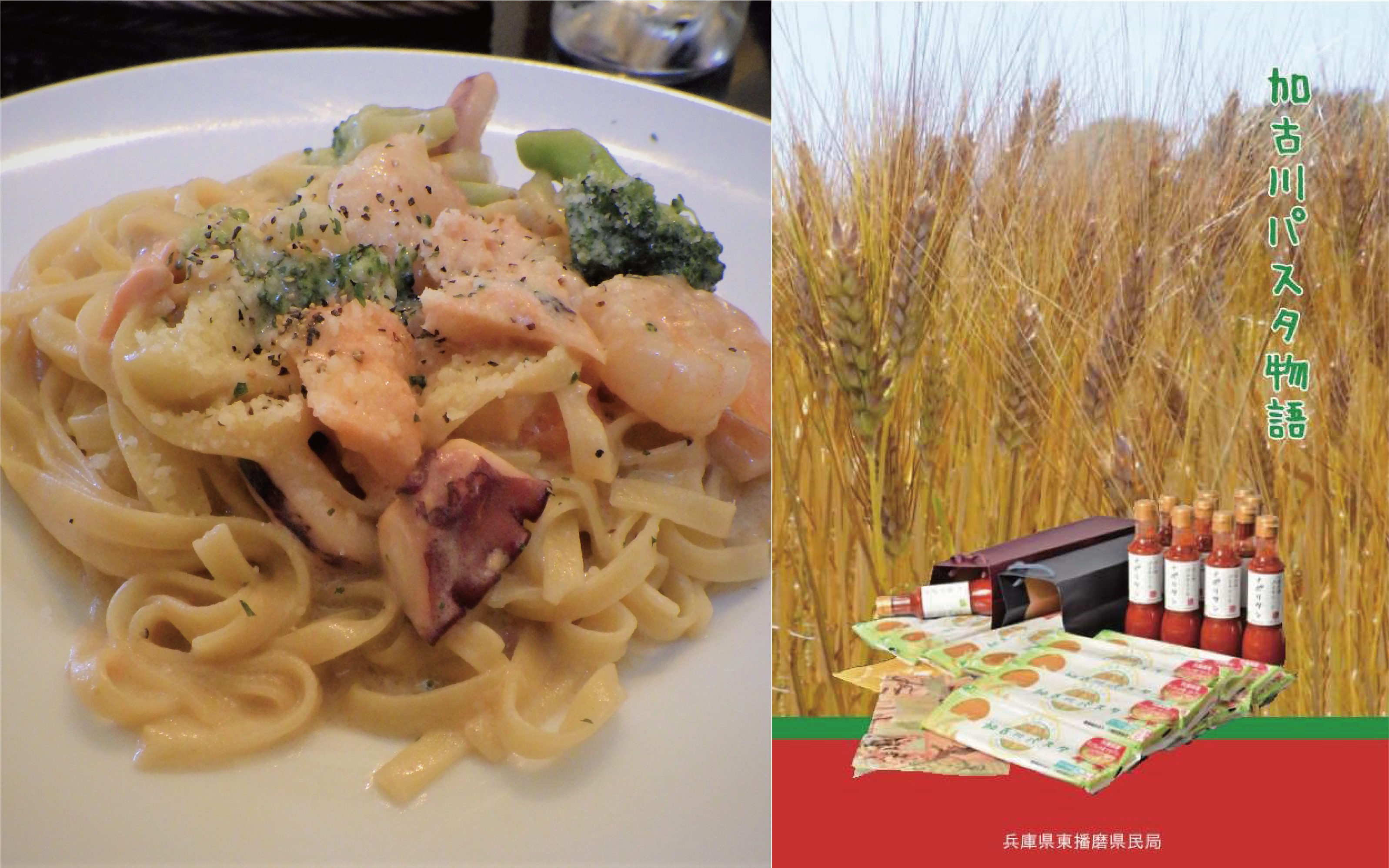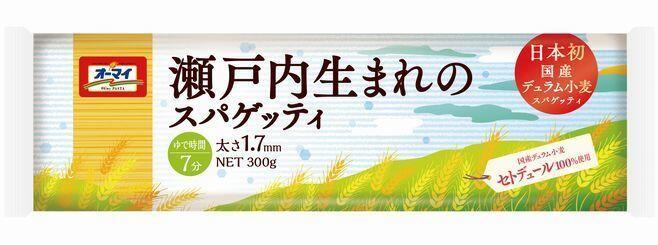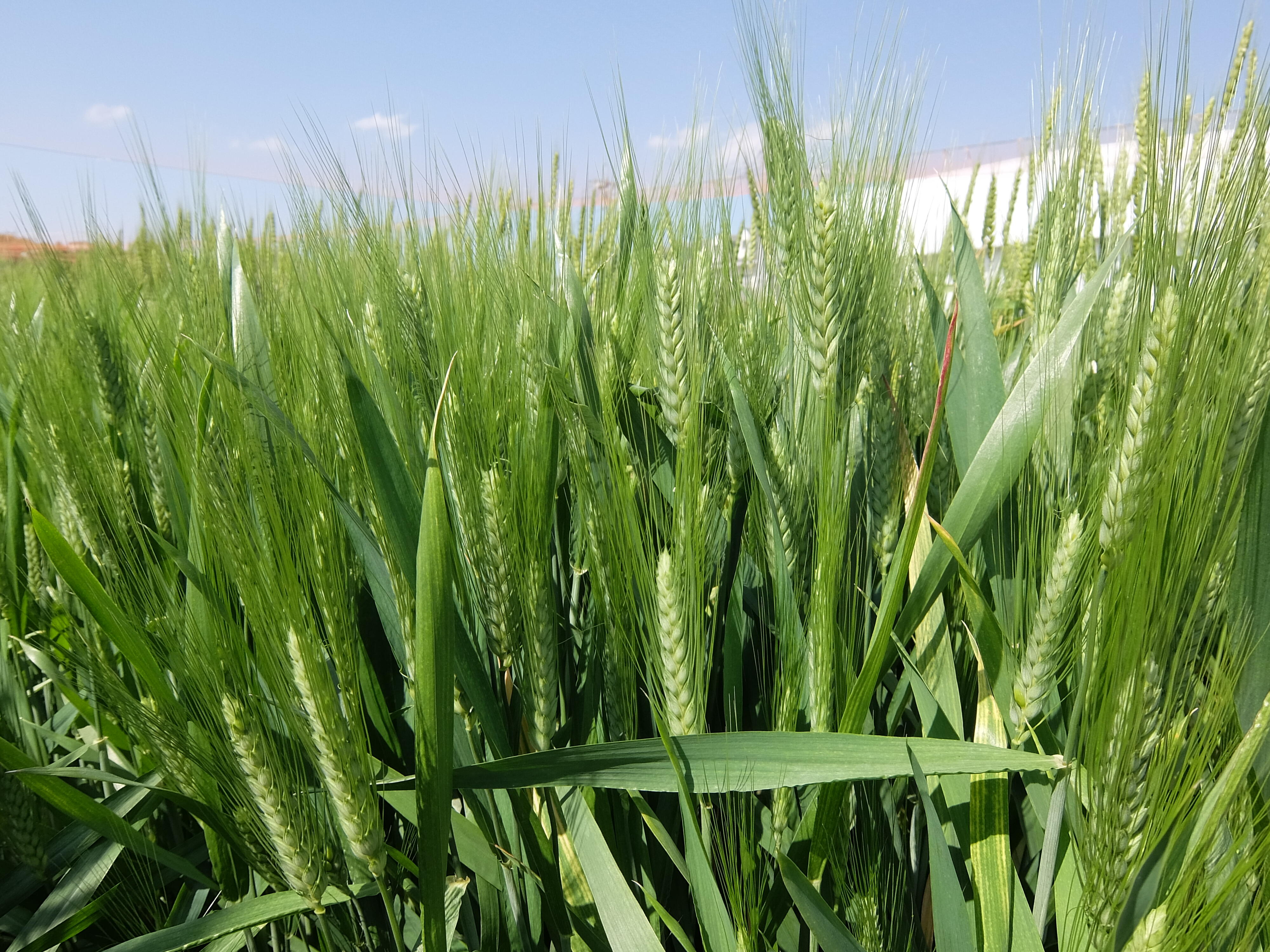※As of December 2024, NARO no longer provides seeds of the durum wheat variety "Setodure".
Most of the wheat used to make pasta in Japan is durum wheat from other countries, but over the past few years, pasta products using domestic durum wheat have been produced one after another, mainly in Hyogo Prefecture. The impetus was Japan's first durum wheat cultivar, Setodure, developed through joint research of the Western Region Agricultural Research Center, NARO (WARC/NARO) and Nippon Corporation. The efforts of Hyogo Prefecture, companies, producers, etc. in cultivation tests and product development have paid off, and the long-awaited pasta, which is completely domestically produced from the stage of cultivation to noodle making, has been realized. It has recently appeared in the Kanto region, and is attracting attention from the perspective of food education.
Completely domestic pasta born in Hyogo
Since 2016, "Kakogawa Pasta", a completely domestic pasta bearing the name of Kakogawa City, Hyogo Prefecture, has been sold at direct sales stores in the southern part of Hyogo Prefecture in the Japan Agricultural Cooperative (JA) Hyogo South region (Fig.1). This pasta is a dried noodle pasta that uses 100% of Japan's first durum wheat variety "Setodure". It is a unique brand product outsourced to a local factory by the Yahata Agricultural Cooperative (approximately 640 farmers) in Kakogawa City, which cultivates the wheat.
Kakogawa Pasta has became famous enough to be sold at local department stores, and the cooperative received the Minister of Agriculture, Forestry and Fisheries Award (production category) at the 2020 Local Production for Local Consumption Excellent Activity Award (sponsored by the Ministry of Agriculture, Forestry and Fisheries and the National Local Production for Local Consumption Promotion Council). Moreover, in 2021, it was certified as a "Hyogo Anshin (Peace of Mind) Brand" that meets the safety and security standards of Hyogo Prefecture.
In addition, the cooperative has collaborated with Ogawa Farm Co., Ltd. (Himeji City, Hyogo Prefecture), an agricultural production corporation that operates a farm restaurant, to develop and sell six types of Kakogawa Fresh Pasta (Fig.1). Restaurants in Hyogo Prefecture also serve pasta dishes (Fig.2) using "Setodure". Hyogo Prefecture, which has supported the development of Kakogawa Pasta, is also making extraordinary efforts to popularize it, and has published a booklet called "The Story of Kakogawa Pasta" that passionately conveys the process of its birth (available on the Hyogo Prefecture website) (Fig.2).
Fig.1 Pasta products using "Setodure" that bear the name "Kakogawa"
(Provided by Hyogo Prefecture)

Fig.2 Restaurant pasta dishes (left) and "Kakogawa Pasta Story" (right) created by Hyogo Prefecture
(Both provided by Hyogo Prefecture)
Spreading to Kanto
In addition, Nippon Group's Oh My Corporation has been manufacturing "Spaghetti Born in Setouchi" (Fig.3) made from 100% Setodure since 2018 and selling it at supermarkets in the Kansai region. Setodure pasta has a greatly appealing points such as strong yellow color, moderate hardness, elasticity, and crispiness, and has an appropriate texture for pasta.
Its popularity has spread to the Kanto region, and from 2020, New Okubo Co., Ltd. (Kashiwa City, Chiba Prefecture), which manufactures and sells pasta, will use 100% Setodure linguine (long pasta with an elliptical cross section, appearing similar to crushed spaghetti) and was introduced in a TV program. Furthermore,Kakogawa pasta salad is served at the outdoor open terrace Bus Ainori 3-chome Terrace (Shinjuku-ku, Tokyo), where delicious ingredients are placed in the empty trunks of highway buses from all over Japan to be delivered to Shinjuku, Tokyo.

Fig.3 "Spaghetti Born in Setouchi" manufactured and sold by Oh My Corporation.
Birth of Japan's first durum wheat variety "Setodure" and establishment of the cultivation method
In Japan, it has long been considered difficult to cultivate durum wheat that is suitable for drying. However, the Western Region Agricultural Research Center, NARO (WARC/NARO), believing that there is a possibility that it could be cultivated in the Setouchi region, where there is relatively little rainfall and it is warm, began cultivating durum wheat suitable for the Setouchi region in 1998. As a result, "Setodure" (Fig.4) was born by selecting a variety suitable for the Setouchi region from the progeny produced by crossing durum wheat varieties from the United States and Italy. The name "Seto" is derived from the Setouchi region, which is suitable for cultivation, and the Latin word "dure", which means hard.
However, it is vulnerable to Fusarium head blight, which tends to occur when there is heavy rain, and it has a weakness regarding the fact that the maturation period is a little late. Therefore, Nippn Corporation, which had been researching the characteristics of wheat, wheat cultivation partner Yahata Agricultural Cooperative, Hyogo Prefecture, etc., started joint research such as cultivation tests, and after about seven years, in 2016, commercial cultivation was finally established. With the aim of further spread the use of durum wheat, the center has created "Cultivation Guidelines for Durum Wheat Setodure".
Currently, "Setodure" is cultivated in an area of about 30 ha mainly in Kakogawa City, Hyogo Prefecture, and about 100 tons are harvested annually. It is aimed to harvest 150 tons per year in 2022.

Fig.4 Setodure with ears
(Provided by the Western Region Agricultural Research Center, NARO (WARC/NARO)
Attracting attention from the viewpoint of food education
Kakogawa Pasta, has also attracted attention from the perspective of food education, which emphasizes local production for local consumption. All elementary schools and some junior high schools and school for the handicapped in Kakogawa City, Hyogo Prefecture have been serving dishes using Kakogawa pasta for school lunches since 2019, and in March 2022, it was decided for it to be provided in school lunches in Ono City, Hyogo Prefecture. This sort of local self-contained food supply is likely to spread further as an ideal form of food education.
Project name
Science and technology research promotion program for agriculture, forestry, fisheries and food industry
Project period
FY 2015 to 2018
Title
Cultivation of domestic durum wheat variety and development of completely domestic pasta products
Leading research institutes
Nippon Flour Mills Co., Ltd. (Currently Nippn Corporation), Hyogo Prefectural Technology Center for Agriculture, Forestry and Fisheries, Yamaguchi Prefectural Technology Center for Agricultural and Forestry, Western Region Agricultural Research Center, NARO (WARC/NARO)
